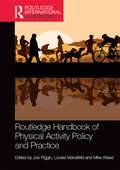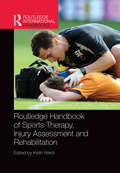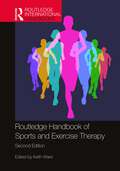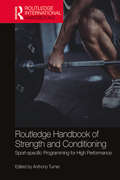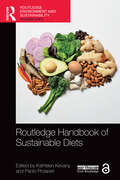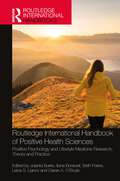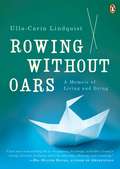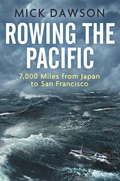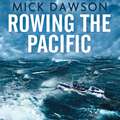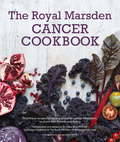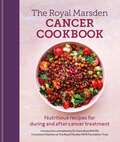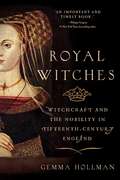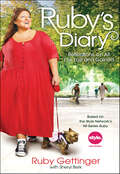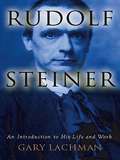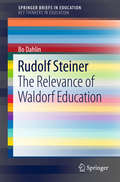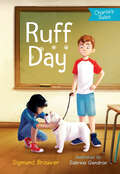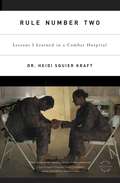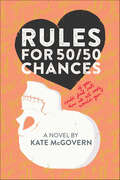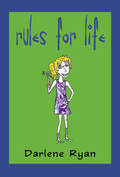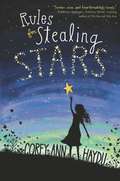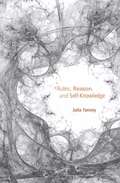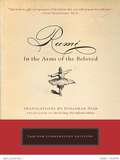- Table View
- List View
Routledge Handbook of Physical Activity Policy and Practice (Routledge International Handbooks)
by Louise Mansfield Mike Weed Joe PigginPhysical activity, inactivity and their relationship to health are serious concerns for governments around the world. This is the first book to critically examine the policy and practice of physical activity from a multi-disciplinary, social-scientific perspective. Moving beyond the usual biophysical and epidemiological approaches, it defines and explores the key themes that are shaping the global physical activity debate. Unrivalled in its scale and scope, it presents the latest data on physical activity from around the world, including case studies from Europe, North and South America, Africa and Asia. Drawing on social, economic and behavioural sciences, it covers contexts from the global to the local and introduces the dominant ideas which inform the study of physical activity. Its 41 chapters examine the use of different forms of evidence in policymaking, the role of organisations in advocating physical activity, and the practical realities of public health interventions. The Routledge Handbook of Physical Activity Policy and Practice is a landmark publication for all students, academics, policymakers and practitioners interested in the social-scientific study of sport, exercise, physical activity and public health.
Routledge Handbook of Sports Therapy, Injury Assessment and Rehabilitation (Routledge International Handbooks)
by Keith WardThe work of a sports therapist is highly technical and requires a confident, responsible and professional approach. The Routledge Handbook of Sports Therapy, Injury Assessment and Rehabilitation is a comprehensive and authoritative reference for those studying or working in this field and is the first book to comprehensively cover all of the following areas: Sports Injury Aetiology Soft Tissue Injury Healing Clinical Assessment in Sports Therapy Clinical Interventions in Sports Therapy Spinal and Peripheral Anatomy, Injury Assessment and Management Pitch-side Trauma Care Professionalism and Ethics in Sports Therapy The Handbook presents principles which form the foundation of the profession and incorporates a set of spinal and peripheral regional chapters which detail functional anatomy, the injuries common to those regions, and evidence-based assessment and management approaches. Its design incorporates numerous photographs, figures, tables, practitioner tips and detailed sample Patient Record Forms. This book is comprehensively referenced and multi-authored, and is essential to anyone involved in sports therapy, from their first year as an undergraduate, to those currently in professional practice.
Routledge Handbook of Sports and Exercise Therapy (Routledge International Handbooks)
by Keith WardThe Routledge Handbook of Sports and Exercise Therapy is a methodically detailed, authoritative, contemporaneous and practical reference source for all those involved in sports and exercise therapy, whether students, established practitioners, educators or researchers. This comprehensive handbook cohesively presents foundational subjects and introduces principles and applications to support the development and practice of sports and exercise therapists.These are presented alongside new essential and evolving topic areas. Such a blend of fundamental underpinning and applied and experiential practical guidance gives this handbook a real sense of relevancy, and a contribution which can help to consolidate the positioning of sports and exercise therapists as key practitioners in an advancing landscape of health, exercise, sport, research and education. The handbook has been produced to create a seamless reference source for readers, but each of its chapters are also designed to be stand-alone presentations in their own right. The following areas are covered: Learning and teaching Evidence-based practice Anatomy and physiology Pathology of injuries Health and safety Clinical assessment Therapeutic modalities Injury rehabilitation Sports and exercise as medicine Sports and exercise nutrition Sports and exercise psychology Professionalism and ethics Structural and cultural competency Sideline sports injury management Management of regional injury conditions Case studies in sports and exercise therapy Employability and career development The handbook is comprehensively referenced and multi-authored. Its design incorporates numerous photographs, figures, tables and detailed sample document templates. It can be considered as an essential and topical resource for anyone involved in sports and exercise therapy, whether in their first year as an undergraduate or already working in professional practice.
Routledge Handbook of Strength and Conditioning: Sport-specific Programming for High Performance (Routledge International Handbooks)
by Anthony TurnerDrawing on the latest scientific research, this handbook introduces the essentials of sport-specific strength and conditioning programme design for over 30 different sports. Enhanced by extensive illustrations and contributions from more than 70 world-leading experts, its chapters present evidence-based best practice for sports including football, rugby, tennis, hockey, basketball, rowing, boxing, golf, swimming, cycling and weightlifting, as well as a variety of wheelchair sports. Every chapter introduces the fundamental requirements of a particular sport – such as the physiological and biomechanical demands on the athlete – and describes a sport-specific fitness testing battery and exercise programme. Additional chapters cover the adaptation of programme design for special populations, including female athletes, young athletes and athletes with a disability. Drawing on the experiences of Olympic and Paralympic coaches and trainers, it offers original insights and practical advice from practitioners working at the highest level. Innovative, comprehensive and truly international in scope, the Routledge Handbook of Strength and Conditioning is vital reading for all strength and conditioning students and an invaluable reference for strength and conditioning coaches and trainers.
Routledge Handbook of Sustainable Diets (Routledge Environment and Sustainability Handbooks)
by Kathleen Kevany and Paolo ProsperiThis handbook presents a must-read, comprehensive and state of the art overview of sustainable diets, an issue critical to the environment and the health and well-being of society. Sustainable diets seek to minimise and mitigate the significant negative impact food production has on the environment. Simultaneously they aim to address worrying health trends in food consumption through the promotion of healthy diets that reduce premature disability, disease and death. Within the Routledge Handbook of Sustainable Diets, creative, compassionate, critical, and collaborative solutions are called for across nations, across disciplines and sectors. In order to address these wide-ranging issues the volume is split into sections dealing with environmental strategies, health and well-being, education and public engagement, social policies and food environments, transformations and food movements, economics and trade, design and measurement mechanisms and food sovereignty. Comprising of contributions from up and coming and established academics, the handbook provides a global, multi-disciplinary assessment of sustainable diets, drawing on case studies from regions across the world. The handbook concludes with a call to action, which provides readers with a comprehensive map of strategies that could dramatically increase sustainability and help to reverse global warming, diet related non-communicable diseases, and oppression and racism. This decisive collection is essential reading for students, researchers, practitioners, and policymakers concerned with promoting sustainable diets and thus establishing a sustainable food system to ensure access to healthy and nutritious food for all.
Routledge Handbook of Sustainable Diets (Routledge Environment and Sustainability Handbooks)
by Kathleen Kevany and Paolo ProsperiThis handbook presents a must-read, comprehensive and state of the art overview of sustainable diets, an issue critical to the environment and the health and well-being of society. Sustainable diets seek to minimise and mitigate the significant negative impact food production has on the environment. Simultaneously they aim to address worrying health trends in food consumption through the promotion of healthy diets that reduce premature disability, disease and death. Within the Routledge Handbook of Sustainable Diets, creative, compassionate, critical, and collaborative solutions are called for across nations, across disciplines and sectors. In order to address these wide-ranging issues the volume is split into sections dealing with environmental strategies, health and well-being, education and public engagement, social policies and food environments, transformations and food movements, economics and trade, design and measurement mechanisms and food sovereignty. Comprising of contributions from up and coming and established academics, the handbook provides a global, multi-disciplinary assessment of sustainable diets, drawing on case studies from regions across the world. The handbook concludes with a call to action, which provides readers with a comprehensive map of strategies that could dramatically increase sustainability and help to reverse global warming, diet related non-communicable diseases, and oppression and racism.This decisive collection is essential reading for students, researchers, practitioners, and policymakers concerned with promoting sustainable diets and thus establishing a sustainable food system to ensure access to healthy and nutritious food for all.
Routledge International Handbook of Positive Health Sciences: Positive Psychology and Lifestyle Medicine Research, Theory and Practice (Routledge International Handbooks)
by Ilona Boniwell Jolanta Burke Beth Frates Ciaran A. O’Boyle Liana S. LianovThis ground-breaking book combines research and practice in the rapidly growing field of Positive Psychology with the fastest-growing medical speciality of Lifestyle Medicine. Section 1 maps out the new field of positive health by exploring the scope, content and architecture of this rapidly emerging area of research. It explores research findings and applications derived from Lifestyle Medicine and Positive Psychology that are critical for positive health. Section 2 delves into positive health research, covering topics such as using character strengths to improve health, maximising psychological wellbeing from head to toe, optimising gut health and understanding the relationships between mind and body. Section 3 offers guidance on applying the principles of positive health by describing new Positive Health Interventions (PHIs), introducing innovative positive health coaching models and exploring the contribution of positive psychology to health equity. The book is ideal for medical doctors, nurses and health professionals interested in helping their patients flourish psychologically and physically. It is an invaluable guide for social workers, positive psychologists, coaches and mental health professionals who want to explore the physiological dimensions of wellbeing.
Rowing Without Oars: A Memoir of Living and Dying
by Ulla-Carin Lindquist Margaret MyersIn the tradition of The Diving Bell and the Butterfly, the extraordinary account of a woman’s illness and her struggle to come to terms with death <P> Ulla-Carin Lindquist was happily married with four adoring children and a successful career as a newscaster. All of that changed when, as her fiftieth birthday drew near, she began to notice small failures of strength and strange numbing sensations in her hands and arms. As she set out to understand her illness, she began a journal recounting her failing health. Soon the diagnosis became terribly clear: she was suffering from ALS, or Lou Gehrig’s disease. In the face of this incurable, degenerative disease, Ulla continued to chronicle her life not only for her children’s sake but also to cope with her impending death. From the moments we ordinarily take for granted—phone calls with her daughters, afternoons spent with her husband and sons— through the extraordinarily painful and pervasive decline of her abilities, Ulla’s unflinching account reminds us of how precious life really is. Her courage through her final days is evident in her clear and lucid prose. As powerful and moving as books like Autobiography of a Face and Tuesdays with Morrie, Rowing without Oars is an unforgettable work that explores the terror, embarrassment, and pain of illness as well as the universal themes of life, death, love, and the enduring importance of family.
Rowing the Pacific: 7,000 Miles from Japan to San Francisco
by Mick DawsonStorms, fatigue, equipment failure, intense hunger, and lack of water are just a few of the challenges that ocean rower Mick Dawson endured whilst attempting to complete one of the World's 'Last Great Firsts'.In this nail-biting true story of man versus nature, former Royal Marine commando Dawson, a Guinness World Record-holder for ocean-rowing and high-seas adventurer takes on the Atlantic and ultimately the North Pacific.It took Dawson three attempts and a back-breaking voyage of over six months to finally cross the mighty North Pacific for the first time. Dawson and his rowing partner Chris Martin spent 189 days, 10 hours and 55 minutes rowing around the clock, facing the destruction of their small boat and near-certain death every mile of the way, before finally reaching the iconic span of San Francisco's Golden Gate Bridge. Dawson's thrilling account of his epic adventure details how he and Chris propelled their fragile craft, stroke by stroke for thousands of miles across some of the most dangerous expanses of ocean, overcoming failure, personal tragedy and everything that nature could throw at him along the way.
Rowing the Pacific: 7,000 Miles from Japan to San Francisco
by Mick Dawson'If you love thrilling adventure books that'll keep you on the edge of your seat, then you're going to love this one' - Naomi Dunbar, Adventure Travel'I am an ocean rower, and have read a lot of books by fellow ocean rowers, and enjoyed them, BUT, this one beats them all. It was brilliant, so gripping that once started I could not put it down, read it in one go, neglecting all my work and chores. This man is brave. This man can row but most of all THIS MAN CAN WRITE.' Ocean Rower'Mick's account of the gruelling journey is compelling. You'll feel that you're there with them, through the near-death experiences and the equipment failures, battling extreme fatigue, frightening storms and an ocean the consistency of liquid cement' Lifeboat MagazineStorms, fatigue, equipment failure, intense hunger, and lack of water are just a few of the challenges that ocean rower Mick Dawson endured whilst attempting to complete one of the World's 'Last Great Firsts'.In this nail-biting true story of man versus nature, former Royal Marine commando Dawson, a Guinness World Record-holder for ocean-rowing and high-seas adventurer takes on the Atlantic and ultimately the North Pacific.It took Dawson three attempts and a back-breaking voyage of over six months to finally cross the mighty North Pacific for the first time. Dawson and his rowing partner Chris Martin spent 189 days, 10 hours and 55 minutes rowing around the clock, facing the destruction of their small boat and near-certain death every mile of the way, before finally reaching the iconic span of San Francisco's Golden Gate Bridge. Dawson's thrilling account of his epic adventure details how he and Chris propelled their fragile craft, stroke by stroke for thousands of miles across some of the most dangerous expanses of ocean, overcoming failure, personal tragedy and everything that nature could throw at him along the way.
Royal Marsden Cancer Cookbook: Nutritious recipes for during and after cancer treatment, to share with friends and family
by ClareThe book is divided into three: a detailed section by Dr Clare Shaw on diet and cancer and the problems you may face during treatment (such as loss of appetite, nausea, sore mouth, change of taste); recipes to cook during treatment, which are nutritionally beneficial and wholesome enough to keep you strong even if you can't eat too much; and a section of recipes for after treatment aimed at keeping you healthy. These recipes are designed to serve smaller portions and two people as well as families, and there are lots of tips about budgeting, leftovers and freezing. Dr Shaw wants to emphasise that you don't have to cook 'special', separate meals for one, the rest of the family can eat in the same way, saving on time and stress as well as encouraging a healthier diet for all.
Royal Marsden Cancer Cookbook: Nutritious recipes for during and after cancer treatment, to share with friends and family
by Clare Shaw'Until now, there has been little authoritative and practical information about this issue. So it is a great relief to welcome The Royal Marsden Cancer Cookbook.' Sarah Stacey, You Magazine'The Royal Marsden Cancer Cookbook is an attractive and accomplished project that combines artistic flair and scientific material, and aims to provide helpful advice and recipes for those undergoing cancer treatment.' Jules Morgan, The Lancet Oncology The book is divided into three: a detailed section by Dr Clare Shaw on diet and cancer and the problems you may face during treatment (such as loss of appetite, nausea, sore mouth, change of taste); recipes to cook during treatment, which are nutritionally beneficial and wholesome enough to keep you strong even if you can't eat too much; and a section of recipes for after treatment aimed at keeping you healthy. These recipes are designed to serve smaller portions and two people as well as families, and there are lots of tips about budgeting, leftovers and freezing. Dr Shaw wants to emphasise that you don't have to cook 'special', separate meals for one, the rest of the family can eat in the same way, saving on time and stress as well as encouraging a healthier diet for all.
Royal Marsden Cancer Cookbook: Nutritious recipes for during and after cancer treatment, to share with friends and family
by Clare Shaw'Until now, there has been little authoritative and practical information about this issue. So it is a great relief to welcome The Royal Marsden Cancer Cookbook.' Sarah Stacey, You Magazine'The Royal Marsden Cancer Cookbook is an attractive and accomplished project that combines artistic flair and scientific material, and aims to provide helpful advice and recipes for those undergoing cancer treatment.' Jules Morgan, The Lancet Oncology One in three people will be diagnosed with cancer. such news is life changing, and brings with it many psychological, emotional and physical challenges, including changes in body weight, appetite and the ability to taste and swallow, as well as alterations in the way your digestive system works. The Royal Marsden Cancer Cookbook explores the foods that will support and nourish you during this time and offers more than 150 delicious, healthy recipes divided into 'During Treatment' (dishes with more energy and in a form that is easier to eat) and 'After Treatment' (healthy options that encourage a balanced diet). There are also masses of inspirational ideas, variations and tips. All the recipes have been reviewed and analysed by Dr Clare Shaw PhD RD, Consultant Dietician at The Royal Marsden, a world-leading cancer centre specialising in diagnosis, treatment, care, education and research. They are designed for all the family - asa well as friends - to share, so you don't have to cook individual meals, thus easing stress and saving you time and money.The recipes include contributions from top chefs and food writers, including Mary Berry, Nigella Lawson, Ruth Rogers, Rick Stein, Liz Earle, Gwyneth Paltrow, Raymond Blanc and Prue Leith, among others. Positive, healthy eating is acknowledged to be invaluable in helping people to remain physically and mentally strong. The Royal Marsden Cancer Cookbook aims to make cooking easy and enjoyable, as well as providing helpful advice and support.
Royal Marsden Cancer Cookbook: Nutritious recipes for during and after cancer treatment, to share with friends and family
by Clare Shaw'Until now, there has been little authoritative and practical information about this issue. So it is a great relief to welcome The Royal Marsden Cancer Cookbook.' Sarah Stacey, You Magazine'The Royal Marsden Cancer Cookbook is an attractive and accomplished project that combines artistic flair and scientific material, and aims to provide helpful advice and recipes for those undergoing cancer treatment.' Jules Morgan, The Lancet Oncology One in three people will be diagnosed with cancer. such news is life changing, and brings with it many psychological, emotional and physical challenges, including changes in body weight, appetite and the ability to taste and swallow, as well as alterations in the way your digestive system works. The Royal Marsden Cancer Cookbook explores the foods that will support and nourish you during this time and offers more than 150 delicious, healthy recipes divided into 'During Treatment' (dishes with more energy and in a form that is easier to eat) and 'After Treatment' (healthy options that encourage a balanced diet). There are also masses of inspirational ideas, variations and tips. All the recipes have been reviewed and analysed by Dr Clare Shaw PhD RD, Consultant Dietician at The Royal Marsden, a world-leading cancer centre specialising in diagnosis, treatment, care, education and research. They are designed for all the family - asa well as friends - to share, so you don't have to cook individual meals, thus easing stress and saving you time and money.The recipes include contributions from top chefs and food writers, including Mary Berry, Nigella Lawson, Ruth Rogers, Rick Stein, Liz Earle, Gwyneth Paltrow, Raymond Blanc and Prue Leith, among others. Positive, healthy eating is acknowledged to be invaluable in helping people to remain physically and mentally strong. The Royal Marsden Cancer Cookbook aims to make cooking easy and enjoyable, as well as providing helpful advice and support.
Royal Witches: Witchcraft and the Nobility in Fifteenth-Century England
by Gemma HollmanThe stories of four royal women, their lives intertwined by family and bound by persecution, unravel the history of witchcraft in fifteenth-century England.Until the mass hysteria of the seventeenth century, accusations of witchcraft in England were rare. However, four royal women, related in family and in court ties—Joan of Navarre, Eleanor Cobham, Jacquetta of Luxembourg and Elizabeth Woodville—were accused of practicing witchcraft in order to kill or influence the king. Some of these women may have turned to the &“dark arts&” in order to divine the future or obtain healing potions, but the purpose of the accusations was purely political. Despite their status, these women were vulnerable because of their gender, as the men around them moved them like pawns for political gains. In Royal Witches, Gemma Hollman explores the lives and the cases of these so-called witches, placing them in the historical context of fifteenth-century England, a setting rife with political upheaval and war. In a time when the line between science and magic was blurred, these trials offer a tantalizing insight into how malicious magic would be used and would later cause such mass hysteria in centuries to come.
Ruby's Diary: Reflections on All I've Lost and Gained
by Sheryl Berk Ruby GettingerRuby Gettinger, the endearing and beloved star of The Style Network's hit reality show Ruby, reveals the most private aspects of her life-altering journey to conquer morbid obesity and to attain health and happiness in this inspirational book based on her personal diaryFrom the debut of The Style Network's number one reality show Ruby, viewers fell in love with its sweet and spirited Southern star, and remain mesmerized by her public mission to overcome her inner conflicts and win her ongoing battle with weight.At her heaviest, Ruby weighed more than 700 pounds. Although she wasn't quite sure how she got to this point—or why—one thing was clear: it was killing her. Her doctor warned that her diabetes was raging out of control and that she could die at any moment. Vowing to change her life to save it, Ruby made a genuine commitment to uncover all of the underlying physical and psychological causes of her food addiction—an act of courage that has helped her lose nearly 400 pounds so far! To support her on this difficult path, Ruby has kept a journal of her experiences, including intimate reflections, surprising discoveries, and current fears, hopes, and dreams, many of which she shares here.Filled with honesty, optimism, and classic "Rubyisms" as well as revealing insights from her friends, family, and team of experts, Ruby's Diary is a remarkable record of one determined woman's complex challenges and her many laudable achievements. Ruby's perseverance is not only an example to all those battling their own weight and addiction issues, it is an example to all those grappling with personal obstacles of any kind. Anyone not in love with Ruby just hasn't met her yet!
Rudolf Steiner
by Gary LachmanThe first truly popular biography of the influential twentieth-century mystic and educator who-while widely known for founding the Waldorf schools and other educational and humanitarian movements-remains a mystery to many who benefit from his ideas. People everywhere have heard of Waldorf schools, Biodynamic farming, Camphill Villages, and other innovations of the Austrian philosopher Rudolf Steiner (1861-1925). Indeed, Steiner-as an architect, artist, teacher, and agriculturalist-ranks among the most creative and prolific figures of the early twentieth century, pioneering work in alternative education, holistic health, and environmental research. While his accomplishments are felt all over the world, few people understand this unusual figure. Steiner's own writings and lectures fill several bookcases, intimidating those who would like to know more. Works on Steiner are often dense and "insider" in tone, further deterring the curious. No popular biography, written by a sympathetic but critical outsider, has been available. Gary Lachman's Rudolf Steinerprovides this missing introduction. Along with telling Steiner's story and placing Steiner in his historical context, Lachman's book presents Steiner's key ideas in a readable, accessible manner. In particular, Lachman considers the spread of Steiner's most popular projects, which include Waldorf schools-one of the leading forms of alternative education-and Biodynamic farming-a popular precursor to organic farming. He also traces Steiner's beginnings as a young intellectual in the ferment of fin de si cle culture, to his rise as a thought leader within the influential occult movement of Theosophy, to the founding of his own metaphysical teaching called Anthroposophy. Finally, the book illustrates how Steiner's methods are put into practice today, and relates Steiner's insights into cosmology to the work of current thinkers. Rudolf Steineris a full-bodied portrait of one of the most original philosophical and spiritual luminaries of the last two centuries, and gives those interested in the history of ideas the opportunity to discover one of the most underappreciated figures of the twentieth century.
Rudolf Steiner: The Relevance of Waldorf Education (SpringerBriefs in Education)
by Bo DahlinThis book covers Rudolf Steiner's biography, presented from an educational point of view and also unfolds the different aspects of Steiner's educational thought in Waldorf Education. His point of view is unique in that it relates education to a wide horizon of different contexts, such as social, pedagogical, evolutionary and spiritual aspects. His ideas are philosophical (ethical, epistemological, ontological). However, above all, they are based on spiritual understanding of the human being and the world. In many ways, they stand in stark contrast to the views that inform present mainstream educational thought and practice. Nevertheless, there are points where Steiner's ideas can find a resonance in more recent educational thought. Steiner was in many ways ahead of his time and his educational ideas are still relevant to many present day educational issues and problems.
Ruff Day: Charlie's Rules #2 (Orca Echoes)
by Sigmund BrouwerEleven-year-old Charlie Dembinski knows how to make his group project for science class an organized and informative success. Unfortunately for Charlie, his (reluctant) best friend, Amy Ma, would rather it be interesting, fun and just a bit gross. And their other partner, Jenna Yee, is too worried about why her puppy, Diesel, keeps attacking her mom to think about their project. Luckily for Jenna, Charlie’s mom is a veterinarian, and Amy and Charlie are keen to help figure out what Diesel’s problem is. What the three classmates don’t realize is that Diesel isn’t trying to hurt anyone. Just the opposite in fact: Diesel is trying to save someone! But will the kids figure out what he’s trying to tell them before Diesel's behavior becomes too much to handle?The second in the Charlie's Rules series, following Pasture Bedtime, from bestselling author Sigmund Brouwer, Ruff Day is sure to delight young animal lovers. The straightforward plot, black-and-white illustrations and unique animal stories make this the perfect chapter book for early readers.
Rule Number Two: Lessons I Learned in a Combat Hospital
by Heidi Squier KraftWhen Lieutenant Commander Heidi Kraft's twin son and daughter were fifteen months old, she was deployed to Iraq. A clinical psychologist in the US Navy, Kraft's job was to uncover the wounds of war that a surgeon would never see. She put away thoughts of her children back home, acclimated to the sound of incoming rockets, and learned how to listen to the most traumatic stories a war zone has to offer.One of the toughest lessons of her deployment was perfectly articulated by the TV show M*A*S*H: "There are two rules of war. Rule number one is that young men die. Rule number two is that doctors can't change rule number one." Some Marines, Kraft realized, and even some of their doctors, would be damaged by war in ways she could not repair. And sometimes, people were repaired in ways she never expected. RULE NUMBER TWO is a powerful firsthand account of providing comfort admidst the chaos of war, and of what it takes to endure.
Rules for 50/50 Chances: A Novel
by Kate McGovernSeventeen-year-old Rose Levenson has a decision to make: Does she want to know how she's going to die? Because when Rose turns eighteen, she can take the test that tells her if she carries the genetic mutation for Huntington's disease, the degenerative condition that is slowly killing her mother. With a fifty-fifty shot at inheriting her family's genetic curse, Rose is skeptical about pursuing anything that presumes she'll live to be a healthy adult-including her dream career in ballet and the possibility of falling in love. But when she meets a boy from a similarly flawed genetic pool and gets an audition for a dance scholarship across the country, Rose begins to question her carefully laid rules.
Rules for Life
by Darlene RyanWhen her mother died two years earlier, Izzy thought the world would change in some identifiable way, but it didn't. It didn't even slow down. Along with constantly watching her brother, Jason, to ensure he didn't repeat his involvement with drugs, Izzy has managed to get through school and the rest of her life using her mother's endless "rules" as guidance, even making up some of her own as she goes along. When her father starts dating again and then decides to get married, Izzy is unprepared. She is convinced she will hate this intruder in her ordered life and is certain that their family is complete as it is. When her father's new girlfriend becomes pregnant, and her health is threatened, Izzy finds that there might just be room in her family for Anne. And while trying to save her brother and stay true to the "rules," Izzy realizes that family involves more than blood and that rules aren't always absolute. A touching, often funny, story of love and acceptance, Rules for Life is a reminder that while we can't choose the family we are born with, we can choose the people we take along for the ride.
Rules for Stealing Stars
by Corey Ann HayduIn the tradition of Sharon Creech and Wendy Mass, Corey Ann Haydu's sparkling middle grade debut is a sister story with a twist of magic, a swirl of darkness, and a whole lot of hope.Silly is used to feeling left out. Her three older sisters think she's too little for most things--especially when it comes to dealing with their mother's unpredictable moods and outbursts. This summer, Silly feels more alone than ever when her sisters keep whispering and sneaking away to their rooms together, returning with signs that something mysterious is afoot: sporting sunburned cheeks smudged with glitter and gold hair that looks like tinsel.When Silly is brought into her sisters' world, the truth is more exciting than she ever imagined. The sisters have discovered a magical place that gives them what they truly need: an escape from the complications of their home life. But there are dark truths there, too. Silly hopes the magic will be the secret to saving their family, but she's soon forced to wonder if it could tear them apart.
Rules, Reason, and Self-Knowledge
by Julia TanneyTanney challenges not only the cognitivist approach that has dominated philosophy and the special sciences for fifty years, but metaphysical-empirical approaches to the mind in general. Rules, Reason, and Self-Knowledge advocates a return to the world-involving, circumstance-dependent, normative practices where the rational mind has its home.
Rumi
by Jonathan StarLandmark translations of the Sufi poet/mystic Rumi from the acclaimed interpreter of the Tao Te Ching. Jonathan Star has assembled selections of Rumi?s verse in a treasury that spans the poet?s life and includes his most celebrated and poignant work. It is an enchanting volume of classic Eastern thought that creates an exhilarating experience for all readers. .
